How Much Does It Cost to Paint a House?

A fresh coat of paint can increase your curb appeal, make your home look newer, and potentially lead to higher offers when you sell. But you’ll need to estimate the cost and make sure it fits into your budget. Several factors, like square footage and the cost of supplies and labor, will impact the final total.
Here’s how much you can expect a freshly painted house to cost:
How much does it cost to paint a house?How to calculate the cost to paint a houseCost to paint house exteriorsFactors that affect the cost to paint a house
How much does it cost to paint a house?
Homeowners spend $1,901 on average painting a home’s interior and $3,045 on the exterior, according to HomeAdvisor. But several factors — including the quality of the paint, whether you hire professionals, and the home’s square footage — affect that estimate.
Here’s a breakdown of what the painting costs might look like for a 2,300-square-foot home, the median size of a new house sold in 2020:
InteriorExteriorAverage cost to paint$1,901$3,045Average range for a 2,300-square-foot home$1,900 to $7,800$1,100 to $7,700Average price per square foot$2 to $6$0.50 to $3.5Sources: HomeAdvisor’s Paint a Home Interior guide and Paint a Home Exterior guide
Don’t Miss: 16 Fast Weekend Projects to Boost Your Home’s Curb Appeal
How to calculate the cost to paint a house
You can always get a quote from a professional, or you can take the following steps to figure out how much it costs to paint a house yourself:
Find the finished area. For interior jobs, measure the height of each room you want to paint and multiply by the width. Do the same for exterior walls if you’re painting the outside, as they measure differently. You might be able to find the exterior perimeter on your mortgage closing papers.Find the paintable area. Measure the total square footage of the windows and doors, and subtract that area from the total finished area. A standard door measures 21 square feet, while a standard window measures 12 square feet.Find the coverage area of the paint. A gallon of paint covers about 400 square feet on average, though you may need more for rough exterior siding. Exteriors usually need two coats of paint, and interiors may need two or three coats if you’re making a dramatic color change. Choose your paint. The cost of a gallon of paint depends on the brand, color, sheen, regional pricing, and whether you’re using interior or exterior paint. Do the math. Divide the paintable area by the coverage of a gallon of paint to find out how many gallons of paint you need. Then, multiply the number of gallons by the price of the gallon to complete your estimate. Use this formula. To find the number of gallons you need, use this formula: square feet of paintable area / square feet of paint coverage area = gallons of paint x 2 = total gallons of paint needed (rounded up to the nearest gallon)
Example calculation
Let’s say you’re painting three rooms — two bedrooms and a living room:
The main bedroom is 200 square feetThe second bedroom is 150 square feetThe living room is 300 square feet
This comes out to a total finished area of 650 square feet. There are also three doors and five windows within those three rooms, for a total area of 123 square feet, giving you a paintable area of 527 square feet. You decide to use paint that costs $50 per gallon.
Here’s how the calculations would break down:
The paintable area: 650 square feet – 123 square feet = 527 square feetThe number of gallons you need: 527 square feet / 400 square feet (the average area a gallon of paint covers) = 1.31 gallons of paint x 2 = 2.62 total gallons of paint neededThe cost of the paint: 3 gallons x $50 = $150
If you’re going the DIY route, then you’ll also need to calculate the cost of basic supplies. For an interior paint job, this might include paint rollers, paint trays, painter’s tape, a paint bucket, sandpaper, caulk, drop cloths, and a ladder.
Related: 15 Home Improvement Projects to Complete Before You List Your Home
Cost to paint house exteriors
The material of your home’s exterior will affect the type and amount of paint you use. You’ll also need to adjust the estimate if your exterior is made of more than one material, such as vinyl and brick.
On a home that measures 1,500 to 2,000 square feet, here’s how much it might cost to paint the exterior, based on what it’s made of:
MaterialAverage cost to paint the exteriorBrick$3,500 to $10,500Vinyl$600 to $3,500Stucco$1,400 to $6,500Concrete$500 to $2,000Metal/aluminum$400 to $3,500Wood$700 to $3,000Trim$1 to $3 per linear footSource: HomeAdvisor’s Paint a Home Exterior guide
Factors that affect the cost to paint a house
Every paint job is different, depending on factors like labor costs, materials and supplies, square footage, and the condition and location of your home.
Labor
When you’re painting a house, labor might represent as much as 75% to 85% of the entire bill, and many charge by area instead of hourly. Professionals that do charge hourly charge about $25 to $75 per hour to paint the exterior and $20 to $50 per hour for the interior.
Painters spend a lot of time preparing the surface, so this might be an area where you can negotiate with the painter to save money. First consider whether you have the time and energy to clean, sand, patch, and caulk the walls.
You also might need to agree to the painter’s terms. For instance, some professionals won’t guarantee the finished product if they’re not doing the prep work. When you’re gathering quotes, make sure the final estimate reflects the arrangement you’ve negotiated.
Tip: Depending on the price of labor and your experience level, you might even decide to skip hiring professionals altogether. Homeowners typically need about two to three weeks to paint an entire home, plus the cost of materials and supplies.
Paint
Paint is the next-biggest cost, at anywhere from $20 to $80 or more per gallon. Professionals often get a contractor discount that they may pass on to you. The cost of the paint depends on the brand, color, sheen, and regional pricing.
Good to know: Interior and exterior paints are not interchangeable, so make sure you don’t mix the two. Exterior paint is made to handle mildew and fading, while interior paint is stain-resistant and allows for cleaning.
While you might want to cut corners here, it’s a good idea to use the highest-quality paint that your budget allows. Using good paint could save you money by offering long-term durability and better coverage, which translates to fewer coats and fewer work hours.
With the exterior, you’ll also need to consider the texture of the siding. Some rough textures, like stucco and wood, require more paint because there’s more surface to cover compared to smooth siding. So stucco and brick might cost $1 to $2 more per square foot compared to wood and vinyl.
Materials
Professionals will often include supplies in their quote, but you’ll need to budget for them if you plan to DIY. Final costs will depend on the brand, quality, quantity, and whether you rent or buy the item.
SuppliesAverage costBrushes$5 to $90Caulk$2 to $8 per tubeDrop cloths$10 to $30 eachLadder$100 to $300Paint pans and buckets $2 to $10Painter’s tape$2 to $5 per rollPower washerVariesRollers and roller handles$15 to $30Sandpaper$3 to $15Scraper$5 to $30Sprayer and power rollers$100 to $2,000Source: HomeAdvisor’s Paint a Home Exterior guide
Location and climate
When you’re painting the exterior, the weather and climate affect the materials you can use, how often you’ll need to paint, and when you can paint.
Homes in areas that experience harsh winters will need paint that’s made to withstand the elements. On the flip side, homes in year-round sunny climates may need paint more regularly because direct sunlight causes paint to fade quicker.
Additionally, high humidity and extremely high or low temperatures can affect how the paint dries and may lead to cracking and peeling.
Check Out: The Cost to Refinance a Mortgage (and How to Pay Less)
Prep work
You or a professional will need to assess your home’s condition before preparing an estimate:
For the exterior: You may need to repair the siding materials, fill cracks and holes, and power wash the sides. You might also need to trim the landscaping and remove vines to prepare the space. For the interior: Walls will need to be cleaned, patched, and sanded. A professional can guarantee this is done quickly and correctly, but you can save costs by doing some of it yourself.
A cash-out refinance can help you fund your next major home improvement project. With Credible, you can compare loan options from all of our partner lenders and get prequalified refinance rates in just a few minutes.
Get the cash you need and the rate you deserve
Compare lendersGet cash out to pay off high-interest debtPrequalify in just 3 minutesFind My Loan
No annoying calls or emails from lenders!
Trustpilot
The post How Much Does It Cost to Paint a House? appeared first on Credible.
5 Best Personal Loans With No Origination Fee
A personal loan could help you cover a variety of expenses, such as home improvements or medical bills. In some cases, lenders charge fees on personal loans that might increase your overall repayment cost.
One of the most common personal loan fees is an origination fee, which is deducted from your loan amount before you receive your funds. However, there are also some lenders that don’t charge origination fees.
Here’s what you should know about no-origination-fee personal loans and where to find them:
5 best personal loans with no origination feesOther personal loans to considerWhat is an origination fee?Other personal loan fees to considerHow to take out a no-origination-fee personal loanHow to keep your personal loan costs as low as possible
5 best personal loans with no origination fees
Before you take out a personal loan, it’s important to compare as many lenders as possible. This way, you can find the right loan for your needs — such as a loan without an origination fee.
Here are Credible’s partner lenders that offer no-origination-fee personal loans:
LenderFixed ratesLoan amountsMin. credit scoreLoan terms (years)

Credible Rating>
Credible lender ratings are evaluated by our editorial team with the help of our loan operations team. The rating criteria for lenders encompass 78 data points spanning interest rates, loan terms, eligibility requirement transparency, repayment options, fees, discounts, customer service, cosigner options, and more. Read our full methodology.
View details>
5.99% – 24.99% APR$2,500 to $35,0006603, 4, 5, 6, 7Fixed APR:
5.99% – 24.99% APRMin. credit score:
660Loan amount:
$2,500 to $35,000Loan terms (years):
3, 4, 5, 6, 7Time to fund:
As soon as the next business day after acceptanceFees:
Late feeDiscounts:
NoneEligibility:
Available in all 50 statesCustomer service:
PhoneSoft credit check:
YesLoan Uses:
Auto repair, credit card refinancing, debt consolidation, home remodel or repair, major purchase, medical expenses, taxes, vacation, and wedding

Credible Rating>
Credible lender ratings are evaluated by our editorial team with the help of our loan operations team. The rating criteria for lenders encompass 78 data points spanning interest rates, loan terms, eligibility requirement transparency, repayment options, fees, discounts, customer service, cosigner options, and more. Read our full methodology.
View details>
2.49% – 19.99% APR$5,000 to $100,0006602, 3, 4, 5, 6, 7
(up to 12 years for home improvement loans)Fixed APR:
2.49% – 19.99% APRMin. credit score:
660Loan amount:
$5,000 to $100,000Loan terms (years):
2, 3, 4, 5, 6, 7*Time to fund:
As soon as the same business dayFees:
NoneDiscounts:
AutopayEligibility:
Available in all states except RI and VTCustomer service:
Phone, emailSoft credit check:
NoLoan servicer:
LightStreamMin. Income:
Does not discloseLoan Uses:
Credit card refinancing, debt consolidation, home improvement, and other purposes
Credible Rating>
Credible lender ratings are evaluated by our editorial team with the help of our loan operations team. The rating criteria for lenders encompass 78 data points spanning interest rates, loan terms, eligibility requirement transparency, repayment options, fees, discounts, customer service, cosigner options, and more. Read our full methodology.
View details>
6.99% – 19.99% APR1$3,500 to $40,0002660
(TransUnion FICO®️ Score 9)3, 4, 5, 6, 7Fixed APR:
6.99% – 19.99% APR1Min. credit score:
660
(TransUnion FICO®️ Score 9)Loan amount:
$3,500 to $40,0002Loan terms (years):
3, 4, 5, 6Time to fund:
Many Marcus customers receive funds in as little as three daysFees:
NoneDiscounts:
AutopayEligibility:
Available in all 50 statesCustomer service:
PhoneSoft credit check:
YesLoan servicer:
Goldman SachsMin. Income:
$30,000Loan Uses:
Credit card refinancing, debt consolidation, home improvement, major purchase, and other purposes

Credible Rating>
Credible lender ratings are evaluated by our editorial team with the help of our loan operations team. The rating criteria for lenders encompass 78 data points spanning interest rates, loan terms, eligibility requirement transparency, repayment options, fees, discounts, customer service, cosigner options, and more. Read our full methodology.
View details>
5.99% – 17.99% APR$600 to $50,000
(depending on loan term)6601, 2, 3, 4, 5Fixed APR:
5.99% – 17.99% APRMin. credit score:
660Loan amount:
$600 to $50,000*Loan terms (years):
1, 2, 3, 4, 5Time to fund:
2 to 4 business days after verificationFees:
NoneDiscounts:
NoneEligibility:
Does not discloseCustomer service:
Phone, emailSoft credit check:
NoMin. Income:
Does not discloseLoan Uses:
Debt consolidation, home improvement, transportation, medical, dental, life events

Credible Rating>
Credible lender ratings are evaluated by our editorial team with the help of our loan operations team. The rating criteria for lenders encompass 78 data points spanning interest rates, loan terms, eligibility requirement transparency, repayment options, fees, discounts, customer service, cosigner options, and more. Read our full methodology.
View details>
5.99% – 18.83% APR$5,000 to $100,000Does not disclose2, 3, 4, 5, 6, 7Fixed APR:
5.99% – 18.83% APRMin. credit score:
Does not discloseLoan amount:
$5,000 to $100,000Loan terms (years):
2, 3, 4, 5, 6, 7Time to fund:
3 business daysFees:
NoneDiscounts:
AutopayEligibility:
Available in all states except MSCustomer service:
Phone, emailSoft credit check:
YesMin. Income:
Does not discloseLoan Uses:
Solely for personal, family, or household uses
Discover
Best for: Longer repayment terms
If you’re looking for a personal loan with a longer repayment term, Discover could be a good choice — you can borrow $2,500 to $35,000 with terms from three to seven years. Just keep in mind that if you pick a longer term, you’ll pay more in interest over time.
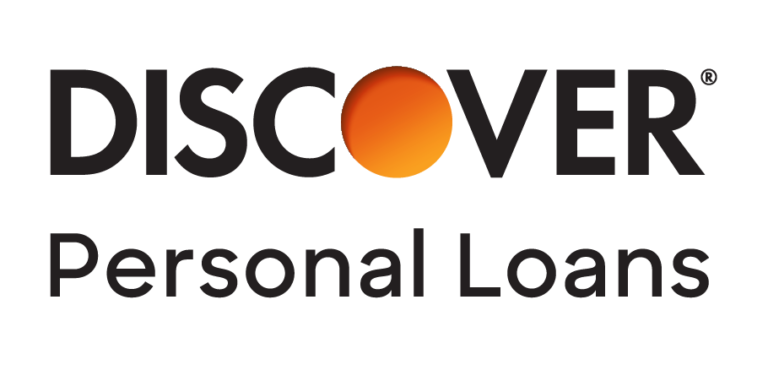
4.4
Credible rating>
Credible lender ratings are evaluated by our editorial team with the help of our loan operations team. The rating criteria for lenders encompass 78 data points spanning interest rates, loan terms, eligibility requirement transparency, repayment options, fees, discounts, customer service, cosigner options, and more. Read our full methodology.
Rates and terms
Fees and Discounts
Customer Experience
Discover Personal Loans
Fixed APR
Range of fixed rates available from this lender
5.99% – 24.99% APR
Min. credit score
Minimum credit score needed to qualify660
Loan amount
Total amount you can borrow from this lender$2,500 to $35,000
Time to fund
How long it takes to receive your moneyAs soon as the next business day after acceptance
Ready to find a personal loan?
Compare rates from top personal loan lenders to find the right one for you.
Check Personalized Rates>Checking rates won’t affect your credit scoreView DetailsFixed APR:
5.99% – 24.99% APRMin. credit score: 660Loan amount: $2,500 to $35,000Loan terms (years): 3, 4, 5, 6, 7Time to fund: As soon as the next business day after acceptanceFees: Late feeDiscounts: NoneEligibility: Available in all 50 statesCustomer service: PhoneSoft credit check: YesLoan Uses: Auto repair, credit card refinancing, debt consolidation, home remodel or repair, major purchase, medical expenses, taxes, vacation, and wedding
Pros
Repayment terms up to 7 yearsAccepts fair credit scoresFast loan funding
Cons
Charges late feesNo discounts offeredCan only borrow up to $35,000
LightStream
Best for: Large loan amounts
With LightStream, you can borrow $5,000 to $100,000 — which could make it a good option if you need a large loan. Most LightStream loans come with terms from two to seven years, but if you use your loan for home improvements, you could have up to 12 years to repay it.

4.9
Credible rating>
Credible lender ratings are evaluated by our editorial team with the help of our loan operations team. The rating criteria for lenders encompass 78 data points spanning interest rates, loan terms, eligibility requirement transparency, repayment options, fees, discounts, customer service, cosigner options, and more. Read our full methodology.
Rates and terms
Fees and Discounts
Customer Experience
LightStream Personal Loans
Fixed APR
Range of fixed rates available from this lender
2.49% – 19.99% APR
Min. credit score
Minimum credit score needed to qualify660
Loan amount
Total amount you can borrow from this lender$5,000 to $100,000
Time to fund
How long it takes to receive your moneyAs soon as the same business day
Ready to find a personal loan?
Compare rates from top personal loan lenders to find the right one for you.
Check Personalized Rates>Checking rates won’t affect your credit scoreView DetailsFixed APR:
2.49% – 19.99% APRMin. credit score: 660Loan amount: $5,000 to $100,000Loan terms (years): 2, 3, 4, 5, 6, 7*Time to fund: As soon as the same business dayFees: NoneDiscounts: AutopayEligibility: Available in all states except RI and VTCustomer service: Phone, emailSoft credit check: NoLoan servicer: LightStreamMin. Income: Does not discloseLoan Uses: Credit card refinancing, debt consolidation, home improvement, and other purposes
Pros
Can borrow up to $100,000Fast loan fundingAccepts fair credit scores
Cons
Must borrow at least $5,000Doesn’t disclose minimum income requirementsNot available in Rhode Island or Vermont
Marcus
Best for: Budget-friendly payment options
With Marcus, you can borrow $3,500 to $40,000 with terms from three to six years. Marcus also offers tailored monthly payment options that could help you fit your payment more easily into your budget.
Plus, after you’ve made at least 12 consecutive, on-time payments, Marcus will let you defer one monthly payment interest-free.
4.3
Credible rating>
Credible lender ratings are evaluated by our editorial team with the help of our loan operations team. The rating criteria for lenders encompass 78 data points spanning interest rates, loan terms, eligibility requirement transparency, repayment options, fees, discounts, customer service, cosigner options, and more. Read our full methodology.
Rates and terms
Fees and Discounts
Customer Experience
Marcus Personal Loans
Fixed APR
Range of fixed rates available from this lender
6.99% – 19.99% APR1
Min. credit score
Minimum credit score needed to qualify660
(TransUnion FICO®️ Score 9)
Loan amount
Total amount you can borrow from this lender$3,500 to $40,0002
Time to fund
How long it takes to receive your moneyMany Marcus customers receive funds in as little as three days
Ready to find a personal loan?
Compare rates from top personal loan lenders to find the right one for you.
Check Personalized Rates>Checking rates won’t affect your credit scoreView DetailsFixed APR:
6.99% – 19.99% APR1Min. credit score: 660
(TransUnion FICO®️ Score 9)Loan amount: $3,500 to $40,0002Loan terms (years): 3, 4, 5, 6Time to fund: Many Marcus customers receive funds in as little as three daysFees: NoneDiscounts: AutopayEligibility: Available in all 50 statesCustomer service: PhoneSoft credit check: YesLoan servicer: Goldman SachsMin. Income: $30,000Loan Uses: Credit card refinancing, debt consolidation, home improvement, major purchase, and other purposes
Pros
Accepts fair credit scoresTailored monthly payment optionsCan defer one monthly payment interest-free after making 12 consecutive, on-time payments
Cons
Funding could take longer compared to other lenders$30,000 minimum income requirementCan only borrow up to $40,000
PenFed
Best for: Smaller loan amounts
If you need to borrow just a small amount, PenFed could be a good choice — you can borrow as little as $600 up to $50,000 with terms from one to five years.
Keep in mind that while you don’t need to be a PenFed member to apply for a loan, you’ll have to join the credit union if you are approved and want to accept the loan.

4.5
Credible rating>
Credible lender ratings are evaluated by our editorial team with the help of our loan operations team. The rating criteria for lenders encompass 78 data points spanning interest rates, loan terms, eligibility requirement transparency, repayment options, fees, discounts, customer service, cosigner options, and more. Read our full methodology.
Rates and terms
Fees and Discounts
Customer Experience
PenFed Personal Loans
Fixed APR
Range of fixed rates available from this lender
5.99% – 17.99% APR
Min. credit score
Minimum credit score needed to qualify660
Loan amount
Total amount you can borrow from this lender$600 to $50,000*
Time to fund
How long it takes to receive your money2 to 4 business days after verification
Ready to find a personal loan?
Compare rates from top personal loan lenders to find the right one for you.
Check Personalized Rates>Checking rates won’t affect your credit scoreView DetailsFixed APR:
5.99% – 17.99% APRMin. credit score: 660Loan amount: $600 to $50,000*Loan terms (years): 1, 2, 3, 4, 5Time to fund: 2 to 4 business days after verificationFees: NoneDiscounts: NoneEligibility: Does not discloseCustomer service: Phone, emailSoft credit check: NoMin. Income: Does not discloseLoan Uses: Debt consolidation, home improvement, transportation, medical, dental, life events
Pros
Can borrow as little as $600Fair credit scores acceptedAllows cosigners on personal loans
Cons
Must join the credit union if you are approved and want to accept the loanDoesn’t disclose minimum income requirementsLoans are disbursed through the mail, which could make funding time longer compared to other lenders (unless you pay an expedited shipping fee)
SoFi
Best for: Borrower perks
SoFi is another lender that offers large loans — you can borrow $5,000 to $100,000 with terms from two to seven years. Additionally, SoFi borrowers have access to a variety of perks, such as unemployment protection, career coaching, and investing advice.

4.9
Credible rating>
Credible lender ratings are evaluated by our editorial team with the help of our loan operations team. The rating criteria for lenders encompass 78 data points spanning interest rates, loan terms, eligibility requirement transparency, repayment options, fees, discounts, customer service, cosigner options, and more. Read our full methodology.
Rates and terms
Fees and Discounts
Customer Experience
SoFi Personal Loans
Fixed APR
Range of fixed rates available from this lender
5.99% – 18.83% APR
Min. credit score
Minimum credit score needed to qualifyDoes not disclose
Loan amount
Total amount you can borrow from this lender$5,000 to $100,000
Time to fund
How long it takes to receive your money3 business days
Ready to find a personal loan?
Compare rates from top personal loan lenders to find the right one for you.
Check Personalized Rates>Checking rates won’t affect your credit scoreView DetailsFixed APR:
5.99% – 18.83% APRMin. credit score: Does not discloseLoan amount: $5,000 to $100,000Loan terms (years): 2, 3, 4, 5, 6, 7Time to fund: 3 business daysFees: NoneDiscounts: AutopayEligibility: Available in all states except MSCustomer service: Phone, emailSoft credit check: YesMin. Income: Does not discloseLoan Uses: Solely for personal, family, or household uses
Pros
Can borrow up to $100,000Allows cosigners on personal loansBorrower perks, such as unemployment protection and investing advice
Cons
Doesn’t disclose minimum credit requirementsDoesn’t disclose minimum income requirementsNot available in Mississippi
Methodology
To find the “best companies,” Credible looked at loan and lender data points from 10 categories to give you a well-rounded perspective on each of our partner lenders. Here’s what we considered:
Interest ratesRepayment termsRepayment optionsMaximum loan amountLoan funding timeFeesDiscountsCustomer service availabilityWhether the minimum credit score is available publiclyWhether consumers could request rates with a soft credit check
Our hope is that this will be a win-win situation for you and us — we only want to get paid if you find a loan that works for you, not by selling your data. This means Credible will only get paid by the lender if you finish the loan process and a loan is disbursed. Additionally, Credible charges you no fees of any kind to compare your loan options.
Learn More: Low-Income Loans: Personal Loans for a Tight Budget
Other personal loans to consider
Here are more personal loan companies we evaluated. Keep in mind that these lenders aren’t offered through Credible, so you won’t be able to easily compare your rates with them on the Credible platform like you can with our partner lenders listed above.
Also note that the loans offered by these lenders might come with origination fees.
LenderLoan terms (years)Loan amountBest for
Show details2, 3, 4, 5$3,000 – $50,000
(depending on relationship with HSBC Bank)HSBC: Best for existing HSBC customersRates: FixedLoan terms (years): 2, 3, 4, 5Loan amount: $3,000 – $50,000 (depending on relationship with HSBC Bank)Fees: NoneDiscounts: Does not discloseEligibility: Available in all states except WIMin. income: Does not discloseCustomer service: Phone, chatSoft credit check: YesMin. credit score: Does not discloseTime to get funds: 1 – 3 days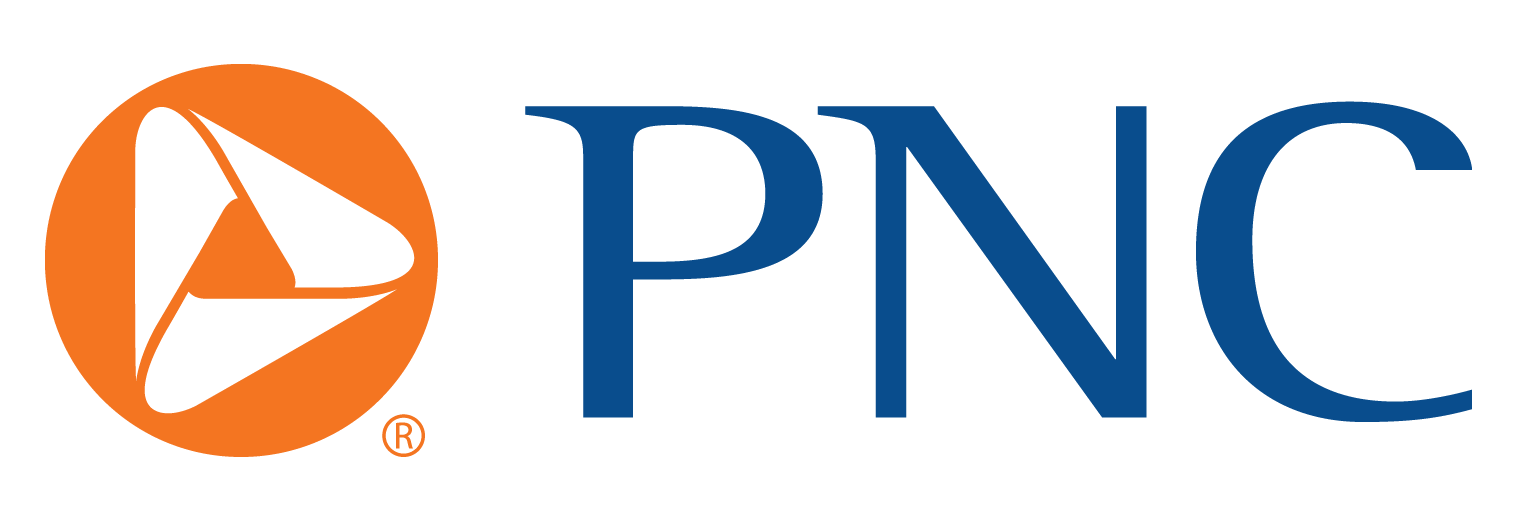
Show details3$1,000 – $35,000PNC: Best for small loan amountsRates: FixedLoan terms (years): 3Loan amount: $1,000 – $35,000Fees: NoneDiscounts: NoneEligibility: Does not discloseMin. income: Does not discloseCustomer service: PhoneSoft credit check: YesMin. credit score: Does not discloseTime to get funds: Does not disclose
Show details3, 5$2,000 – $45,000Rocket Loans: Best for quick loan fundingRates: FixedLoan terms (years): 3, 5Loan amount: $2,000 – $45,000Fees: Origination feeDiscounts: AutopayEligibility: Available in all states except IA, NV, and WVMin. income: Does not discloseCustomer service: Phone, emailSoft credit check: YesMin. credit score: Does not discloseTime to get funds: Does not discloseThe lenders in this table aren’t our partners. But you can use Credible to compare rates in 2 minutes from other lenders who offer personal loans.
Get Rates Now
What is an origination fee?
A loan origination fee is the price the lender charges for offering the loan. This fee can include the costs of processing your application, underwriting, funding, and other associated administrative services.
Personal loan origination fees generally range from 1% to 8% of your loan amount, depending on the lender. For example, if you took out a $5,000 loan with a 5% origination fee, you’d be charged $250.
Keep in mind: While some lenders charge a flat origination fee, others have a range — for example, a personal loan from Upgrade could come with an origination fee from 2.9% to 8%.
In this case, the actual fee you’re charged will depend on several factors, such as your credit and income.
Check Out: Coronavirus Hardship Loans: 7 Options to Consider
Other personal loan fees to consider
In addition to origination fees, there are also other costs that could come with taking out a personal loan, depending on the lender. Some of these potential fees include:
Application fees: These are charged when you apply for a loan — before you get an approval decision. This type of fee can range from $25 to $50.Late fees: These are assessed if you make a past-due payment. On average, late fees can range from $25 to $50 or from 3% to 5% of the monthly payment amount.Returned check fees: These are charged if you make a loan payment that’s returned for insufficient funds. These typically range from $20 to $50.Payment protection insurance: This is a type of insurance that will cover your loan payments if you’re unable to work. Not all lenders offer payment protection insurance (PPI), but those that do might encourage you to sign up — however, keep in mind that it isn’t required. If you opt to get PPI, you’ll typically pay about 1% of your loan amount. Prepayment penalties: These are assessed if you pay off your loan ahead of schedule. These are typically 2% to 5% of the loan amount. Keep in mind that if you take out a personal loan with any of Credible’s partner lenders, you won’t have to worry about prepayment penalties.Tip: Before you get a personal loan, it’s important to consider the overall cost so you can be prepared for any added expenses. Also, be sure to ask the lender about any fees that could impact your total repayment costs.
You can estimate how much you’ll pay for a loan using our personal loan calculator below.
Enter your loan information to calculate how much you could pay
Loan amountEnter the total amount borrowedInterest rateEnter your annual interest rateorLoan termEnter the amount of time you have to repay your loanyears
Total Payment>
Total Interest>
Monthly Payment>
With a>
loan, you will pay>
monthly and a total of>
in interest over the life of your loan. You will pay a total of>
over the life of the
loan.
How to take out a no-origination-fee personal loan
If you’re ready to take out a personal loan, follow these four steps:
Research and compare lenders. Be sure to consider as many personal loan lenders as possible to find the right loan for your situation. Compare not only interest rates but also repayment terms and eligibility requirements. If you’re looking to avoid origination fees with your loan, also make sure to check into any fees charged by the lenders you’re considering.Pick a loan option. After you’ve done your lender research, choose the loan option that best suits your needs.Complete the application. Once you’ve chosen a lender, you’ll need to fill out a full application and submit any required documentation, such as tax returns or pay stubs. Get your funds. If you’re approved, the lender will have you sign for the loan so your money can be released to you. The time to fund for a personal loan is usually about one week — though some lenders will fund loans as soon as the same or next business day after approval.
Learn More: Best Personal Loans for Fair Credit
How to keep your personal loan costs as low as possible
Although you might be able to avoid personal loan fees with certain lenders, you’ll still typically need to pay interest on your loan. Interest is essentially the cost of borrowing money and is the main factor that will impact your total repayment costs.
However, there are a few strategies that could help keep these personal loan costs as low as possible, such as:
Have good credit
You’ll typically need good to excellent credit to qualify for a personal loan. A good credit score is usually considered to be 700 or higher. There are also several lenders that offer personal loans for bad credit, but these loans usually come with higher interest rates and fees compared to good credit loans.
The lender will also consider your credit score to determine your interest rate. In general, the higher your credit score, the better your interest rate — and the less you’ll pay overall on your loan.
Tip: There are several strategies that could help you build your credit and qualify for better interest rates in the future.
For example, you might be able to improve your credit over time by making on-time payments on all of your bills, paying down credit card balances, or taking out a credit-builder loan.
pply with a cosigner
If you have bad credit, having a creditworthy cosigner could make it easier to get approved for a loan. Not all lenders allow cosigners on personal loans, but some do — including no-origination-fee personal loan lenders like LightStream, PenFed, and SoFi.
Even if you don’t need a cosigner to qualify, having one could get you a better interest rate than you’d get on your own — which could help you keep your overall costs lower.
Tip: A cosigner can be anyone with good credit — such as a parent, another relative, or a trusted friend — who is willing to share responsibility for the loan. Just keep in mind that this means they’ll be on the hook if you can’t make your payments.
Choose a short repayment term
While picking a longer repayment term could get you a lower monthly payment, you’ll also pay more in interest over time. Because of this, it’s usually a good idea to choose the shortest term you can afford — this way, you can keep your interest costs as low as possible.
Tip: Many lenders also offer better interest rates to borrowers who opt for shorter repayment terms.
Comparing lenders
Taking your time to shop around and compare as many lenders as possible can help you find the most cost-effective loan for your financial needs. In addition to personal loan interest rates, be sure to consider repayment terms and any fees charged by the lender.
Credible make it easy to compare lenders: You can see your prequalified rates from multiple lenders in just two minutes.
Ready to find your personal loan?
Credible makes it easy to find the right loan for you.
Free to use, no hidden feesOne simple form, easy to fill out and your info is protectedMore options, pick the loan option that best fits your personal needsHere for you. Our team is here to help you reach your financial goalsFind My Rate
Checking rates won’t affect your credit
Trustpilot
The post 5 Best Personal Loans With No Origination Fee appeared first on Credible.
Did you miss our previous article…
https://www.coloradomicrofinance.org/?p=90
What Is a Townhouse? Everything You Want to Know

Townhouses are a common type of housing, and you’ve almost certainly seen your share of townhouse communities — or, at the very least, a row of townhomes lining a street — where you live. This distinct building style shares many similarities with detached homes and condos, but there are also a number of features that set townhouses apart.
Here’s what you need to know about townhouses and how they compare to condos and single-family houses:
What is a townhouse?Townhouse vs. condo vs. housePros and cons of a townhouseTips for buying a townhouse in 2021Should I buy a townhouse?
What is a townhouse?
A townhouse is an individually owned, residential home — usually multi-level — that shares a wall with at least one other home. Because they’re often constructed side by side, townhouses are sometimes referred to as row houses, particularly when located in a dense urban area.
The owner of a townhome owns both the structure and the land it sits on. In some cases, townhouse clusters are part of a larger townhome community, which is often managed by a homeowners association that sets the rules for the community, collects membership fees from the homeowners, and arranges for maintenance.
Townhouse vs. condo vs. house
Although townhouses, single-family houses, and condos all serve as residential homes and can be financed with a mortgage, they’re actually quite different. Here’s a breakdown of the primary differences between these three property types:
TownhouseDetached houseCondoType of ownershipFee simple: includes the structure and the landFee simple: includes the structure and the landCondominium: includes the space inside the condo but not the outside space or landCost to buyUsually less than a detached house but more than a condoUsually the most expensiveUsually the least expensiveFinanceStandard mortgage financingStandard mortgage financingSubject to financing restrictionsNeighborsAt least one shared wallNo shared wallsAt least one shared wallMaintenance responsibilitiesYou’re responsible for the exterior and interior of your home. You and your neighbors share responsibility for walls common to both of your homesYou’re responsible for all maintenance You’re only responsible for interior maintenance, such as plumbing; the condo association takes care of common areasInsuranceStandard homeowners insuranceStandard homeowners insuranceCondo (HO-6) insurance; condo association policy insures common areas and exterior of buildingAmenitiesSometimes, if part of a planned communitySometimes, if part of a planned communityOften; many communities have shared amenities like a swimming pool and fitness center
Any property you buy has rights of ownership associated with it, but some properties have more rights than others:
Fee-simple ownership: When you buy a detached home or townhome, you receive fee-simple ownership. This is the least restrictive type of ownership. It allows you to use your house, yard, and any other structures on your land as you wish, as long as you act within the law and abide by HOA rules, if applicable.Condominium ownership: Condo owners have fewer ownership rights than owners of houses and townhouses. What they own individually is the space between the exterior walls of their unit, but not the exterior structure of the unit. They might also be entitled to exclusive use of amenities, like a patio or parking space, located in a common area but reserved specifically for their own use.
Read: Condos vs. Houses: How to Decide
Financing
Detached homes and townhouses are generally easier to finance than condos are. That’s because when you buy a detached home or townhouse, you buy the house and land it sits on.
When you buy a condo, the agency backing your mortgage loan — Fannie Mae, for instance — must approve or “warrant” the building or community before it’ll sign off on financing. When it does, it’ll likely be at a higher interest rate than you’d get with a house or townhouse.
Why the higher interest rate? Mortgage rates on condos are usually higher since the lender has to take on additional risk. With a townhouse, the lender only has to worry about you defaulting on your mortgage. But with a condo, it also has to consider the fact that other condo owners in your building might default on their loans and HOA dues as well. Such defaults could threaten the financial viability of the complex and, in turn, negatively impact your condo’s value.
Pros and cons of a townhouse
Every type of home has pros and cons. Here are some to consider before you buy a townhouse:
Pros
Less expensive than a detached homeSame financing options and ownership rights as a detached homeLess yard to maintainA sense of community
Cons
Less privacy than a detached homeOften subject to HOA restrictions and feesLimited yard sizeFewer style choices
Tips for buying a townhouse in 2021
The process of buying a townhouse compared to a single-family house is relatively similar, but you’ll want to be especially considerate of the following:
Budget: In addition to the home price and closing costs, consider HOA fees. Make sure these costs don’t send you over budget.HOA: An HOA protects a community’s property values by enforcing certain standards. These standards include appearance and upkeep of your unit, the kinds of structures you can construct in the yard, and whether you can keep a boat or RV on your property. Ask yourself if these policies are overly constricting.Amenities: Amenities like a pool, fitness center, and clubhouse can make a townhouse community a more enjoyable place to live, but you’ll pay to maintain them as part of your HOA dues. Decide whether you’d use them enough to justify the expense.Neighbors: Because townhouses are attached, you’ll share walls with at least one neighbor, and you’ll live in close proximity to all your neighbors. Living so close together can foster a sense of community, but you may not be comfortable with the noise or lack of privacy. An end unit will give you slightly more privacy.Future plans: Consider your life stage and think about how happy you’ll be in a townhouse over the long term. Ask yourself if it will suit your needs a few years from now, and take into consideration your family and financial goals.
Should I buy a townhouse?
A townhouse could be a great choice if you’re seeking a smaller home with a yard that requires minimal upkeep. Perhaps paying HOA dues and the lack of privacy are small compromises when compared to the benefits of owning an easy-to-maintain home in full.
If, on the other hand, the thought of homeownership conjures images of lots of space and privacy, where you can do whatever you want without neighbors or HOAs interfering, a detached home might be a better choice.
And, if all exterior maintenance is a deal breaker, consider buying a condo instead.
The post What Is a Townhouse? Everything You Want to Know appeared first on Credible.
Did you miss our previous article…
https://www.coloradomicrofinance.org/?p=89
Credit Score Needed to Refinance Student Loans and Other Requirements
If you’re applying for a new loan, you’ll often need good credit to get approved. This is also true if you’re looking to refinance your student loans.
However, minimum credit score requirements for refinancing can differ from one lender to the next.
Here’s what you should know about the minimum credit score needed to refinance student loans:
Eligibility requirements to refinance student loansCredit score needed to refinance student loansHow to qualify for student loan refinancingWhat you can do if you don’t meet qualifying requirementsAlternatives to refinancing a student loan
Eligibility requirements to refinance student loans
While eligibility criteria — including minimum credit score requirements — can vary by lender, here are a few common conditions for student loan refinancing that you’ll likely come across:
Eligibility criteriaMin. requirementsCredit scoreTypically need good to excellent credit (credit score of 700 or above)Some lenders also accept lower credit scores (but these loans usually come with higher interest rates)If you have bad credit, applying with a cosigner could help you get approvedVerifiable income
Proof of income that shows your ability to repay the loanSome lenders have a minimum income requirement (usually about $30,000)
Debt-to-income ratio
(amount you owe in monthly debt payments compared to your income)
50% maximum DTI ratio (a lower ratio than this will likely make it easier to get approved)
Learn More: 11 Strategies for Paying Off Your Student Loans Faster
Credit score needed to refinance student loans
The exact credit score you’ll need to refinance your student loans will depend on the lender. Most lenders require borrowers to have good to excellent credit. A good credit score is usually considered to be 700 or higher. Your credit score will help determine your interest rate, too — in general, the higher your credit score, the better your interest rate.
There are also several lenders that offer refinancing for bad credit, but these loans typically come with higher interest rates compared to good credit loans.
Tip: While you can refinance both federal and private loans (and will need to meet the same refinancing credit requirements for both), refinancing federal student loans will cost you access to federal protections — such as income-driven repayment plans and student loan forgiveness programs.
If you don’t want to lose access to these federal benefits, another option to consider is consolidating your federal loans into a Direct Consolidation Loan. This won’t change your interest rate, but it will allow you to extend your repayment up to 30 years. Just keep in mind that by extending your term, you’ll pay more in interest over time.
If you decide to refinance your student loans, it’s important to compare as many lenders as possible. Consider not only their interest rates, but also eligibility criteria (such as minimum credit score requirements), repayment terms, and any fees charged by the lender.
Here are Credible’s refinancing partner lenders and their minimum credit score requirements:
LenderFixed rates from (APR)Variable rates from (APR)Loan terms (years)Loan amountsOffer Cosigner Release?

Credible Rating>
Credible lender ratings are evaluated by our editorial team with the help of our loan operations team. The rating criteria for lenders encompass 78 data points spanning interest rates, loan terms, eligibility requirement transparency, repayment options, fees, discounts, customer service, cosigner options, and more. Read our full methodology.
View details>
4.54%+N/A10, 15, 20$7,500 up to $200,000
(larger balances require special approval)Yes, after 36 monthsFixed APR:
4.54%+Variable APR:
N/AMin. credit score:
Does not discloseLoan amount:
$7,500 up to $500,000Loan terms (years):
10, 15, 20Max. undergraduate loan balance:
$250,000 – $500,000Time to fund:
4 monthsRepayment options:
Immediate repayment, forbearance, loans discharged upon death or disabilityFees:
NoneDiscounts:
AutopayEligibility:
Must be a resident of KentuckyCustomer service:
PhoneSoft credit check:
NoCosigner release:
After 36 monthsLoan servicer:
Kentucky Higher Education Student Loan CorporationMax. graduate loan balance:
$250,000 – $500,000Credible Review:
Advantage Education Loan reviewOffers Parent PLUS Refinancing :
Yes

Credible Rating>
Credible lender ratings are evaluated by our editorial team with the help of our loan operations team. The rating criteria for lenders encompass 78 data points spanning interest rates, loan terms, eligibility requirement transparency, repayment options, fees, discounts, customer service, cosigner options, and more. Read our full methodology.
View details>
2.15%+
1.87%+5, 7, 10, 15, 20$10,000 up to $250,000
(depending on degree)NoFixed APR:
2.15%+Variable APR:
N/AMin. credit score:
Does not discloseLoan amount:
$10,000 to $400,000Loan terms (years):
5, 7, 10, 15, 20Repayment options:
Military deferment, forbearanceFees:
Late feeDiscounts:
AutopayEligibility:
Must have a credit score of at least 720, a minimum income of $60,000, and must be a resident of TexasCustomer service:
Email, phoneSoft credit check:
Does not discloseCosigner release:
NoLoan servicer:
Firstmark ServicesMax. Undergraduate Loan Balance:
$100,000 – $149,000Max. Graduate Loan Balance:
$200,000 – $400,000Offers Parent PLUS Refinancing:
Does not disclose

Credible Rating>
Credible lender ratings are evaluated by our editorial team with the help of our loan operations team. The rating criteria for lenders encompass 78 data points spanning interest rates, loan terms, eligibility requirement transparency, repayment options, fees, discounts, customer service, cosigner options, and more. Read our full methodology.
View details>
2.44%+1
2.24%+15, 7, 10, 15, 20$10,000 to $500,000
(depending on degree and loan type)Yes, after 36 monthsFixed APR:
2.44%+1Variable APR:
2.24%+1Min. credit score:
Does not discloseLoan amount:
$10,000 to $750,000Loan terms (years):
5, 7, 10, 15, 20Repayment options:
Immediate repayment, academic deferment, military deferment, forbearance, loans discharged upon death or disabilityFees:
Late feeDiscounts:
Autopay, loyaltyEligibility:
Must be a U.S. citizen or permanent resident and have at least $10,000 in student loansCustomer service:
Email, phone, chatSoft credit check:
YesCosigner release:
After 24 to 36 monthsLoan servicer:
Firstmark ServicesMax. Undergraduate Loan Balance:
$100,000 to $149,000Max. Graduate Loan Balance:
Less than $150,000Offers Parent PLUS Refinancing:
Yes

Credible Rating>
Credible lender ratings are evaluated by our editorial team with the help of our loan operations team. The rating criteria for lenders encompass 78 data points spanning interest rates, loan terms, eligibility requirement transparency, repayment options, fees, discounts, customer service, cosigner options, and more. Read our full methodology.
View details>
2.99%+2
2.94%+25, 7, 10, 12, 15, 20$5,000 to $300,000
(depending on degree type)Yes, after 24 monthsFixed APR:
2.99%+2Variable APR:
2.94%+2Min. credit score:
Does not discloseLoan amount:
$5,000 to $300,000Loan terms (years):
5, 7, 10, 12, 15, 20Repayment options:
Military deferment, forbearance, loans discharged upon death or disabilityFees:
Late feeDiscounts:
AutopayEligibility:
All states except for MECustomer service:
Email, phone, chatSoft credit check:
YesCosigner release:
After 24 to 36 monthsLoan servicer:
College Ave Servicing LLCMax. Undergraduate Loan Balance:
$100,000 to $149,000Max. Graduate Loan Balance:
Less than $300,000Offers Parent PLUS Refinancing:
Yes
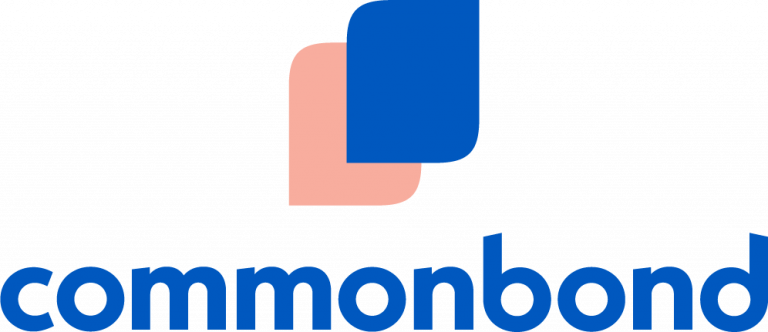
Credible Rating>
Credible lender ratings are evaluated by our editorial team with the help of our loan operations team. The rating criteria for lenders encompass 78 data points spanning interest rates, loan terms, eligibility requirement transparency, repayment options, fees, discounts, customer service, cosigner options, and more. Read our full methodology.
View details>
2.16%+
2.11%+5, 7, 10, 15, 20$5,000 to $500,000Yes, after 36 monthsFixed rate:
2.44%+1Variable rate:
2.24%+1Min. credit score:
680Loan amount:
$5,000 to $500,000Cosigner release:
YesLoan terms (years):
5, 7, 10, 15, 20Repayment options:
Academic deferment, forbearance, loans discharged upon death or disabilityFees:
Late feeDiscounts:
AutopayEligibility:
Available in all states, except MS and NVCustomer service:
Email, phone, chatSoft credit check:
YesLoan servicer:
FirstMarkMax. undergraduate loan balance:
$500,000Max. graduate loan balance:
$500,000Offers Parent PLUS refinancing:
YesMin. income:
$65,000 (for 15- and 20-year products)
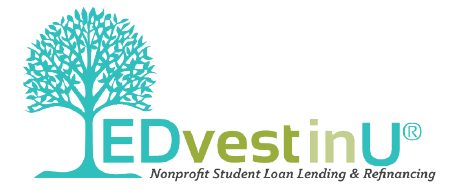
Credible Rating>
Credible lender ratings are evaluated by our editorial team with the help of our loan operations team. The rating criteria for lenders encompass 78 data points spanning interest rates, loan terms, eligibility requirement transparency, repayment options, fees, discounts, customer service, cosigner options, and more. Read our full methodology.
View details>
1.8%+5
1.8%+55, 10, 15, 20$1,000 to $250,000Yes, after 36 monthsFixed APR:
1.8%+5Variable APR:
1.8%+5Min. credit score:
700Loan amount:
$7,500 to $200,000Loan terms (years):
5, 10, 15, 20Repayment options:
Immediate repayment, academic deferment, forbearance, loans discharged upon death or disabilityFees:
NoneDiscounts:
AutopayEligibility:
Must be a U.S. citizen or permanent resident and submit two personal referencesCustomer service:
Email, phoneSoft credit check:
YesCosigner release:
After 36 monthsLoan servicer:
Granite State Management & Resources (GSM&R)Max. Undergraduate Loan Balance:
$150,000 to $249,000Max. Graduate Loan Balance:
$150,000 to $199,000Offers Parent PLUS Refinancing :
Yes

Credible Rating>
Credible lender ratings are evaluated by our editorial team with the help of our loan operations team. The rating criteria for lenders encompass 78 data points spanning interest rates, loan terms, eligibility requirement transparency, repayment options, fees, discounts, customer service, cosigner options, and more. Read our full methodology.
View details>
2.47%+3
2.39%+35, 7, 10, 12, 15, 20Minimum of $15,000NoFixed APR:
2.47%+3Variable APR:
2.39%+3Min. credit score:
680Loan amount:
No maximumLoan terms (years):
5, 7, 10, 12, 15, 20Repayment options:
ForbearanceFees:
NoneDiscounts:
NoneEligibility:
Must be a U.S. citizen or permanent resident, have at least $15,000 in student loan debt, and have a bachelor’s degree or higher from an approved schoolCustomer service:
Email, phoneSoft credit check:
YesCosigner release:
NoLoan servicer:
MohelaMax. Undergraduate Loan Balance:
No maximumMax. Graduate Loan Balance:
No maximumOffers Parent PLUS Refinancing:
Yes

Credible Rating>
Credible lender ratings are evaluated by our editorial team with the help of our loan operations team. The rating criteria for lenders encompass 78 data points spanning interest rates, loan terms, eligibility requirement transparency, repayment options, fees, discounts, customer service, cosigner options, and more. Read our full methodology.
View details>
3.47%+4
2.44%+45, 10, 15, 20$5,000 to $250,000Yes, after 48 months of on-time paymentsFixed APR:
3.47%+4Variable APR:
2.44%+4Min. credit score:
670Loan amount:
$5,000 to $250,000Loan terms (years):
5, 10, 15, 20Repayment options:
Academic deferment, military deferment, forbearanceFees:
Late feeDiscounts:
AutopayEligibility:
Must be U.S. citizen or permanent residentCustomer service:
Email, phone, chatSoft credit check:
YesCosigner release:
YesMax undergraduate loan balance:
$250,000Max graduate loan balance:
$250,000Offers Parent PLUS refinancing:
Yes

Credible Rating>
Credible lender ratings are evaluated by our editorial team with the help of our loan operations team. The rating criteria for lenders encompass 78 data points spanning interest rates, loan terms, eligibility requirement transparency, repayment options, fees, discounts, customer service, cosigner options, and more. Read our full methodology.
View details>
2.24%+7N/A5, 7, 10, 12, 15, 20Up to $300,000Yes, after 24 monthsFixed APR:
2.24%+7Variable APR:
N/AMin. credit score:
670Loan amount:
Up to $300,000Loan terms (years):
5, 7, 10, 15, 20Time to fund:
Usually one business dayRepayment options:
Academic deferral, military deferral, forbearance, death/disability dischargeFees:
NoneDiscounts:
AutopayEligibility:
Available in all 50 statesCustomer service:
Email, phoneSoft credit check:
YesCosigner release:
After 24 monthsMax. undergraduate loan balance:
$300,000Max. graduate balance:
$300,000Offers Parent PLUS loans:
YesMin. income:
None

Credible Rating>
Credible lender ratings are evaluated by our editorial team with the help of our loan operations team. The rating criteria for lenders encompass 78 data points spanning interest rates, loan terms, eligibility requirement transparency, repayment options, fees, discounts, customer service, cosigner options, and more. Read our full methodology.
View details>
3.05%+
3.05%+7, 10, 15$10,000 up to the total amount of qualified education debt NoFixed APR:
3.05%+Variable APR:
3.05%+Min. credit score:
670Loan amount:
$10,000 up to the total amountLoan terms (years):
7, 10, 15Repayment options:
Military deferment, loans discharged upon death or disabilityFees:
NoneDiscounts:
NoneEligibility:
Must be a U.S. citizen or permanent resident and have at least $10,000 in student loansCustomer service:
Email, phoneSoft credit check:
YesCosigner release:
NoLoan servicer:
AESMax. Undergraduate Loan Balance:
No maximumMax. Gradaute Loan Balance:
No maximumOffers Parent PLUS Refinancing:
Yes
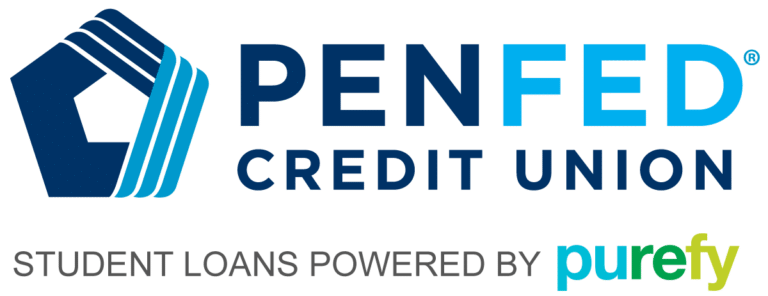
Credible Rating>
Credible lender ratings are evaluated by our editorial team with the help of our loan operations team. The rating criteria for lenders encompass 78 data points spanning interest rates, loan terms, eligibility requirement transparency, repayment options, fees, discounts, customer service, cosigner options, and more. Read our full methodology.
View details>
2.89%+N/A5, 8, 12, 15$7,500 to $300,000Yes, after 12 monthsFixed APR:
2.89%+Variable APR:
N/AMin. credit score:
670Loan amount:
$7,500 to $300,000Loan terms (years):
5, 8, 12, 15Repayment options:
Does not discloseFees:
NoneDiscounts:
NoneEligibility:
Must be a U.S. citizen and have and at least $7,500 in student loansCustomer service:
Email, phone, chatSoft credit check:
YesCosigner release:
After 12 monthsLoan servicer:
PenFedMax. Undergraduate Loan Balance:
$300,000Max. Graduate Loan Balance:
$300,000Offers Parent PLUS Refinancing:
Yes
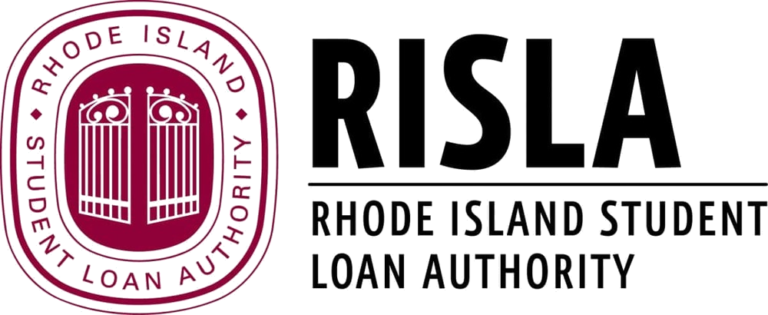
Credible Rating>
Credible lender ratings are evaluated by our editorial team with the help of our loan operations team. The rating criteria for lenders encompass 78 data points spanning interest rates, loan terms, eligibility requirement transparency, repayment options, fees, discounts, customer service, cosigner options, and more. Read our full methodology.
View details>
2.69%+N/A5, 10, 15$7,500 up to $250,000
(depending on highest degree earned) NoFixed APR:
2.69%+Variable APR:
N/AMin. credit score:
680Loan amount:
$7,500 to $250,000Loan terms (years):
5, 10, 15Repayment options:
Academic deferment, military deferment, forbearance, loans discharged upon death or disabilityFees:
NoneDiscounts:
AutopayEligibility:
Available in all 50 states; must also have at least $7,500 in student loans and a minimum income of $40,000Customer service:
Email, phoneSoft credit check:
Does not discloseCosigner release:
NoLoan servicer:
Rhode Island Student Loan AuthorityMax. Undergraduate Loan Balance:
$150,000 – $249,000Max. Graduate Loan Balance:
$200,000 – $249,000Offers Parent PLUS Refinancing:
Yes

Credible Rating>
Credible lender ratings are evaluated by our editorial team with the help of our loan operations team. The rating criteria for lenders encompass 78 data points spanning interest rates, loan terms, eligibility requirement transparency, repayment options, fees, discounts, customer service, cosigner options, and more. Read our full methodology.
View details>
2.49%+6
1.99%+65, 7, 10, 15, 20$5,000 up to the full balance of your qualified education loans NoFixed APR:
2.49%+6Variable APR:
1.99%+6Min. credit score:
Does not discloseLoan amount:
$5,000 up to the full balanceLoan terms (years):
5, 7, 10, 15, 20Repayment options:
Academic deferment, military defermentFees:
NoneDiscounts:
Autopay, loyaltyEligibility:
Available in all 50 statesCustomer service:
Email, phone, chatSoft credit check:
YesCosigner release:
NoMax undergraduate loan balance:
No maximumMax graduate loan balance:
No maximumOffers Parent PLUS refinancing:
YesAll APRs reflect autopay and loyalty discounts where available | 1Citizens Disclosures | 2College Ave Disclosures | 5EDvestinU Disclosures | 3 ELFI Disclosures | 4INvestEd Disclosures | 7ISL Education Lending Disclosures | 6SoFi Disclosures
Compare personalized rates from multiple lenders without affecting your credit score. 100% free!
Compare Now
Trustpilot
Check Out: 7 Ways to Lower Your Student Loan Interest Rate Now
How to qualify for student loan refinancing
If you’re ready to refinance your student loans, follow these four steps:
Check your credit score. When you apply for refinancing, the lender will review your credit to determine your creditworthiness — so it’s a good idea to take a look at your credit first to see where you stand. You can use a site like AnnualCreditReport.com to review your credit reports for free. If you find any errors, dispute them with the appropriate credit bureau to potentially boost your credit score.Gather income documents. Lenders typically ask borrowers to submit recent pay stubs or tax documents to verify income as well as calculate DTI. Some lenders have a specific minimum income requirement you’ll need to meet while others don’t — but in either case, they’ll want to see that you can afford to repay the loan. Research and compare lenders. Be sure to shop around and compare as many student loan refinance companies as possible to find the right loan for you. Many lenders provide a prequalification option without a hard credit check so you can see your personalized loan offers before completing a full application. For example, with Credible, you can compare your prequalified rates from multiple lenders after filling out a single form — without affecting your credit.Pick your loan option and complete the application. After you’ve done your lender research, pick the loan option that best suits your needs. You’ll then need to fill out a full application and submit any required documentation. If you’re approved, continue making payments on your old loans while the refinance is processed — this could take one to two billing cycles to complete.
If you decide to refinance your student loans, remember to consider as many lenders as you can to find the right loan for you. This is easy with Credible — you can compare your prequalified rates from multiple lenders in just two minutes.
Find out if refinancing is right for you
Compare actual rates, not ballpark estimates – Unlock rates from multiple lenders in about 2 minutesWon’t impact credit score – Checking rates on Credible won’t impact your credit scoreData privacy – We don’t sell your information, so you won’t get calls or emails from multiple lendersSee Your Refinancing Options
Credible is 100% free!
Trustpilot
Learn More: How to Know if Your Student Loan Interest Rates Are Too High
What you can do if you don’t meet qualifying requirements
If you don’t meet the qualifying requirements for refinancing, here are a few options to consider:
dd a cosigner — and find a lender that offers cosigner release
Having a creditworthy cosigner could help you get approved for refinancing if you have poor or fair credit. A cosigner can be anyone with good credit — such as a parent, other relative, or trusted friend — who is willing to share responsibility for the loan.
Even if you don’t need a cosigner to qualify for refinancing, having one could get you a lower interest rate than you’d get on your own.
Cosigner release options: Many lenders offer cosigner release — meaning your cosigner could be removed from the loan after you meet certain requirements. To be eligible for cosigner release, you’ll usually need to make consecutive, on-time payments for a specific period of time as well as meet the underwriting criteria on your own.
If your potential cosigner feels unsure about sharing responsibility for the loan, finding a lender that allows for cosigner release might help put their mind at ease. Also be sure to sit down and discuss ground rules for your situation before you apply (such as what to do if you can’t make a payment) to avoid straining your relationship with your cosigner.
If you’re thinking about refinancing with a cosigner, here are some pros and cons to keep in mind:
ProsConsMight help you get approved if you have bad creditCould get you a lower interest rateMight be able to release the cosigner from the loan in the future (depending on the lender)You might not know anyone who has good enough credit to cosign (or who is willing to do so)Your cosigner will be on the hook if you don’t make your payments (this could also damage their credit)If your lender doesn’t offer a cosigner release option, you’ll have to refinance again to remove your cosigner from the loan
Check Out: How Often Can You Refinance Student Loans?
Improve your credit score
If you have poor credit and can wait to refinance, it could be a good idea to spend some time improving your credit score first. This way, you’ll likely have an easier time getting approved — as well as have a better chance of qualifying for a good interest rate.
There are several ways to potentially build your credit, such as:
Making on-time payments: Your payment history is one of the biggest factors that make up your credit score. Paying all of your bills on time could help you build a positive payment history and improve your credit over time.Paying down credit card balances: Another major component of your credit score is your credit utilization ratio — this is the amount you owe on revolving credit lines (such as credit cards and lines of credit) compared to your total credit limits. Paying down your balances can lower your credit utilization, which might boost your score. Becoming an authorized user: One of the easiest ways to build your credit is to become an authorized user on the credit card account of someone you trust. By doing this, you can benefit from the card owner’s good credit habits without even needing to use the card.
Learn More: Cost to Refinance Student Loans: Fees and Discounts Explained
lternatives to refinancing a student loan
Refinancing is a good idea in some cases, but it isn’t right for everyone. Additionally, it can be hard to qualify for refinancing if you don’t have good credit or stable income (or someone willing to cosign your loan).
While the options for private student loans outside of refinancing are limited, here are a few alternatives to consider if you have federal student loans:
Sign up for an income-driven repayment plan
On an income-driven repayment (IDR) plan, your payments will be based on your income — typically 10% to 20% of your discretionary income. Additionally, any remaining balance will be forgiven after 20 to 25 years, depending on the plan.
There are four main IDR plans to choose from:
Pay As You Earn (PAYE)Revised Pay As You Earn (REPAYE)Income-Based Repayment (IBR)Income-Contingent Repayment (ICR)
Check Out: PAYE vs. REPAYE: Which Repayment Plan Is Right for You?
Pursue student loan forgiveness
There are several student loan forgiveness programs available to federal student loan borrowers. Most of these programs require you to work in a certain field and make qualifying payments for a specific amount of time.
For example, if you work for a nonprofit or government organization and make qualifying payments for 10 years, you might be eligible for Public Service Loan Forgiveness.
Learn More: Private Student Loan Consolidation
Consolidate your loans
If you have multiple federal loans, you can consolidate them into a Direct Consolidation Loan. With a Direct Consolidation Loan, your interest rate will be the average of your old loans, but you might be able to extend your repayment term up to 30 years — this could greatly reduce your monthly payments but also means you’ll pay more in interest over time.
If you decide to refinance your loans, remember to consider as many lenders as you can to find the right loan for your needs. This is easy with Credible: You can compare your prequalified rates from multiple lenders in two minutes — without affecting your credit.
Compare Rates Now
The post Credit Score Needed to Refinance Student Loans and Other Requirements appeared first on Credible.
How to Pay Off $300,000 in Student Loans
The average student loan debt for college students is $39,351. However, some students — such as those attending expensive law or medical programs — end up with $300,000 or more in education debt.
Paying off such a large balance can be difficult and time consuming. For example, if you had $300,000 in federal student loans and paid them off on the standard 10-year repayment plan with a 6.22% interest rate, you’d end up with a monthly payment of $3,364 and a total repayment cost of $403,663.
The good news is that there are several strategies that could help you pay off your student loans more easily.
Here’s how to pay off $300,000 in student loan debt:
Refinance your student loansConsider using a cosigner when refinancingExplore income-driven repayment plansPursue loan forgiveness for federal student loansAdopt the debt avalanche or debt snowball method
1. Refinance your student loans
Student loan refinancing is the process of paying off your old student loans with a new loan. Depending on your credit, you might get a lower interest rate through refinancing — this could save you money on interest and potentially help you pay off your loan faster.
Or you could opt to extend your repayment term through refinancing to reduce your monthly payments and lessen the strain on your budget. Just keep in mind that choosing a longer term means you’ll pay more in interest over time.
Keep in mind: While you can refinance both federal and private loans, refinancing federal student loans will cost you access to federal benefits and protections — such as income-driven repayment plans and student loan forgiveness programs.
If you decide to refinance your student loans, be sure to consider as many lenders as possible. This way, you can find the right loan for your situation.
Here are Credible’s partners that offer refinancing for student loan balances of $300,000:
LenderFixed rates from (APR)Variable rates from (APR)Loan terms (years)Loan amounts

Credible Rating>
Credible lender ratings are evaluated by our editorial team with the help of our loan operations team. The rating criteria for lenders encompass 78 data points spanning interest rates, loan terms, eligibility requirement transparency, repayment options, fees, discounts, customer service, cosigner options, and more. Read our full methodology.
View details>
2.44%+1
2.24%+15, 7, 10, 15, 20$10,000 to $500,000
(depending on degree and loan type)Fixed APR:
2.44%+1Variable APR:
2.24%+1Min. credit score:
Does not discloseLoan amount:
$10,000 to $750,000Loan terms (years):
5, 7, 10, 15, 20Repayment options:
Immediate repayment, academic deferment, military deferment, forbearance, loans discharged upon death or disabilityFees:
Late feeDiscounts:
Autopay, loyaltyEligibility:
Must be a U.S. citizen or permanent resident and have at least $10,000 in student loansCustomer service:
Email, phone, chatSoft credit check:
YesCosigner release:
After 24 to 36 monthsLoan servicer:
Firstmark ServicesMax. Undergraduate Loan Balance:
$100,000 to $149,000Max. Graduate Loan Balance:
Less than $150,000Offers Parent PLUS Refinancing:
Yes

Credible Rating>
Credible lender ratings are evaluated by our editorial team with the help of our loan operations team. The rating criteria for lenders encompass 78 data points spanning interest rates, loan terms, eligibility requirement transparency, repayment options, fees, discounts, customer service, cosigner options, and more. Read our full methodology.
View details>
2.99%+2
2.94%+25, 7, 10, 12, 15, 20$5,000 to $300,000
(depending on degree type)Fixed APR:
2.99%+2Variable APR:
2.94%+2Min. credit score:
Does not discloseLoan amount:
$5,000 to $300,000Loan terms (years):
5, 7, 10, 12, 15, 20Repayment options:
Military deferment, forbearance, loans discharged upon death or disabilityFees:
Late feeDiscounts:
AutopayEligibility:
All states except for MECustomer service:
Email, phone, chatSoft credit check:
YesCosigner release:
After 24 to 36 monthsLoan servicer:
College Ave Servicing LLCMax. Undergraduate Loan Balance:
$100,000 to $149,000Max. Graduate Loan Balance:
Less than $300,000Offers Parent PLUS Refinancing:
Yes
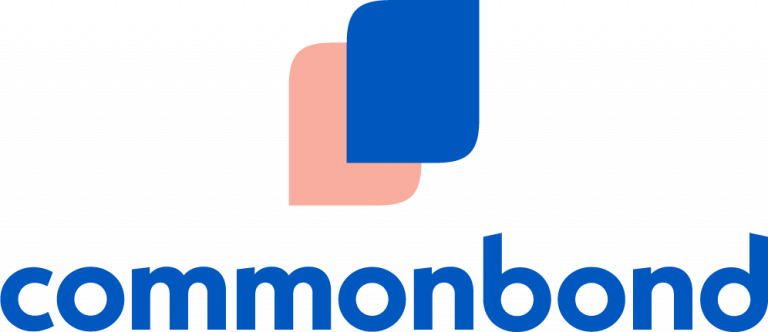
Credible Rating>
Credible lender ratings are evaluated by our editorial team with the help of our loan operations team. The rating criteria for lenders encompass 78 data points spanning interest rates, loan terms, eligibility requirement transparency, repayment options, fees, discounts, customer service, cosigner options, and more. Read our full methodology.
View details>
2.16%+
2.11%+5, 7, 10, 15, 20$5,000 to $500,000Fixed rate:
2.44%+1Variable rate:
2.24%+1Min. credit score:
680Loan amount:
$5,000 to $500,000Cosigner release:
YesLoan terms (years):
5, 7, 10, 15, 20Repayment options:
Academic deferment, forbearance, loans discharged upon death or disabilityFees:
Late feeDiscounts:
AutopayEligibility:
Available in all states, except MS and NVCustomer service:
Email, phone, chatSoft credit check:
YesLoan servicer:
FirstMarkMax. undergraduate loan balance:
$500,000Max. graduate loan balance:
$500,000Offers Parent PLUS refinancing:
YesMin. income:
$65,000 (for 15- and 20-year products)

Credible Rating>
Credible lender ratings are evaluated by our editorial team with the help of our loan operations team. The rating criteria for lenders encompass 78 data points spanning interest rates, loan terms, eligibility requirement transparency, repayment options, fees, discounts, customer service, cosigner options, and more. Read our full methodology.
View details>
2.47%+3
2.39%+35, 7, 10, 12, 15, 20Minimum of $15,000Fixed APR:
2.47%+3Variable APR:
2.39%+3Min. credit score:
680Loan amount:
No maximumLoan terms (years):
5, 7, 10, 12, 15, 20Repayment options:
ForbearanceFees:
NoneDiscounts:
NoneEligibility:
Must be a U.S. citizen or permanent resident, have at least $15,000 in student loan debt, and have a bachelor’s degree or higher from an approved schoolCustomer service:
Email, phoneSoft credit check:
YesCosigner release:
NoLoan servicer:
MohelaMax. Undergraduate Loan Balance:
No maximumMax. Graduate Loan Balance:
No maximumOffers Parent PLUS Refinancing:
Yes

Credible Rating>
Credible lender ratings are evaluated by our editorial team with the help of our loan operations team. The rating criteria for lenders encompass 78 data points spanning interest rates, loan terms, eligibility requirement transparency, repayment options, fees, discounts, customer service, cosigner options, and more. Read our full methodology.
View details>
2.24%+7N/A5, 7, 10, 12, 15, 20Up to $300,000Fixed APR:
2.24%+7Variable APR:
N/AMin. credit score:
670Loan amount:
Up to $300,000Loan terms (years):
5, 7, 10, 15, 20Time to fund:
Usually one business dayRepayment options:
Academic deferral, military deferral, forbearance, death/disability dischargeFees:
NoneDiscounts:
AutopayEligibility:
Available in all 50 statesCustomer service:
Email, phoneSoft credit check:
YesCosigner release:
After 24 monthsMax. undergraduate loan balance:
$300,000Max. graduate balance:
$300,000Offers Parent PLUS loans:
YesMin. income:
None

Credible Rating>
Credible lender ratings are evaluated by our editorial team with the help of our loan operations team. The rating criteria for lenders encompass 78 data points spanning interest rates, loan terms, eligibility requirement transparency, repayment options, fees, discounts, customer service, cosigner options, and more. Read our full methodology.
View details>
3.05%+
3.05%+7, 10, 15$10,000 up to the total amount of qualified education debtFixed APR:
3.05%+Variable APR:
3.05%+Min. credit score:
670Loan amount:
$10,000 up to the total amountLoan terms (years):
7, 10, 15Repayment options:
Military deferment, loans discharged upon death or disabilityFees:
NoneDiscounts:
NoneEligibility:
Must be a U.S. citizen or permanent resident and have at least $10,000 in student loansCustomer service:
Email, phoneSoft credit check:
YesCosigner release:
NoLoan servicer:
AESMax. Undergraduate Loan Balance:
No maximumMax. Gradaute Loan Balance:
No maximumOffers Parent PLUS Refinancing:
Yes
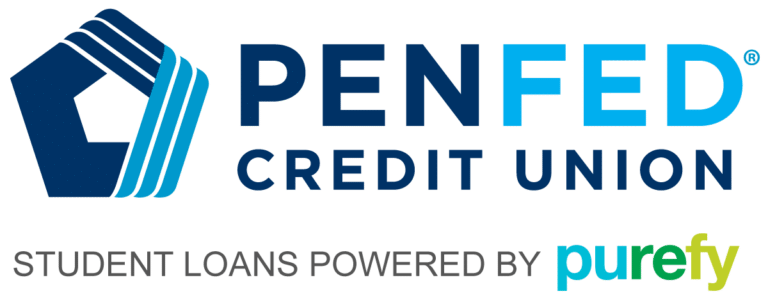
Credible Rating>
Credible lender ratings are evaluated by our editorial team with the help of our loan operations team. The rating criteria for lenders encompass 78 data points spanning interest rates, loan terms, eligibility requirement transparency, repayment options, fees, discounts, customer service, cosigner options, and more. Read our full methodology.
View details>
2.89%+N/A5, 8, 12, 15$7,500 to $300,000Fixed APR:
2.89%+Variable APR:
N/AMin. credit score:
670Loan amount:
$7,500 to $300,000Loan terms (years):
5, 8, 12, 15Repayment options:
Does not discloseFees:
NoneDiscounts:
NoneEligibility:
Must be a U.S. citizen and have and at least $7,500 in student loansCustomer service:
Email, phone, chatSoft credit check:
YesCosigner release:
After 12 monthsLoan servicer:
PenFedMax. Undergraduate Loan Balance:
$300,000Max. Graduate Loan Balance:
$300,000Offers Parent PLUS Refinancing:
Yes

Credible Rating>
Credible lender ratings are evaluated by our editorial team with the help of our loan operations team. The rating criteria for lenders encompass 78 data points spanning interest rates, loan terms, eligibility requirement transparency, repayment options, fees, discounts, customer service, cosigner options, and more. Read our full methodology.
View details>
2.49%+6
1.99%+65, 7, 10, 15, 20$5,000 up to the full balance of your qualified education loansFixed APR:
2.49%+6Variable APR:
1.99%+6Min. credit score:
Does not discloseLoan amount:
$5,000 up to the full balanceLoan terms (years):
5, 7, 10, 15, 20Repayment options:
Academic deferment, military defermentFees:
NoneDiscounts:
Autopay, loyaltyEligibility:
Available in all 50 statesCustomer service:
Email, phone, chatSoft credit check:
YesCosigner release:
NoMax undergraduate loan balance:
No maximumMax graduate loan balance:
No maximumOffers Parent PLUS refinancing:
YesCompare personalized rates from multiple lenders without affecting your credit score. 100% free!
Compare Now
Trustpilot
All APRs reflect autopay and loyalty discounts where available | 1Citizens Disclosures | 2College Ave Disclosures | 5EDvestinU Disclosures | 3 ELFI Disclosures | 4INvestEd Disclosures | 7ISL Education Lending Disclosures | 6SoFi Disclosures
2. Consider using a cosigner when refinancing
You’ll typically need good to excellent credit to qualify for refinancing — a good credit score is usually considered to be 700 or higher. There are also several lenders that offer refinancing for bad credit, but these loans usually come with higher interest rates compared to good credit loans.
If you’re struggling to get approved, consider applying with a creditworthy cosigner. Even if you don’t need a cosigner to qualify, having one could get you a lower interest rate than you’d get on your own.
Tip: A cosigner can be anyone with good credit — such as a parent, other relative, or trusted friend — who is willing to share responsibility for the refinanced loan. Keep in mind that this means they’ll be on the hook if you can’t make your payments.
Learn More: Best Student Refinance Companies: Reviewed and Rated
3. Explore income-driven repayment plans
If you have federal student loans, you might consider signing up for an income-driven repayment (IDR) plan. On an IDR plan, your payments will be based on your income — typically 10% to 20% of your discretionary income. Additionally, you could have any remaining balance forgiven after 20 to 25 years, depending on the plan.
Here’s how the four main IDR plans compare to a few other federal repayment plan options:
Repayment planWho’s eligible?Monthly paymentRepayment termsEligible for loan forgiveness?Standard repayment planAny borrower with Direct or FFEL LoansAmount when payments are spread equally over 10 years (usually $50 minimum) 10 yearsNoGraduated repayment planAny borrower with Direct or FFEL LoansDepends on loan amount
(payments start low and increase every 2 years)10 yearsNoExtended repayment planAny borrower with more than $30,000 in Direct or FFEL LoansFixed: Spread evenly over up to 25 years
Graduated: Depends on loan amount (start low and increase every 2 years)Up to 25 yearsNoIncome-Based Repayment (IBR)Borrowers with partial financial hardship
(no Parent PLUS Loans)For borrowers who took out loans after July 1, 2014: 10% of discretionary income
(never more than 10-year plan)
For borrowers who took out loans before July 1, 2014: 15% of discretionary income
(never more than 10-year plan)For borrowers who took out loans after July 1, 2014: 20 years
For borrowers who took out loans before July 1, 2014: 25 yearsYesPay As You Earn (PAYE)Must have partial financial hardshipMust have borrowed on or after Oct. 1, 200710% of discretionary income
(never more than 10-year plan)20 yearsYesRevised Pay As You Earn (REPAYE)Any borrower
(no Parent PLUS Loans)10% of discretionary income
(no cap)20 years
(25 years if repaying grad school debt)YesIncome Contingent Repayment (ICR)Any borrower
(Parent PLUS Loans must be consolidated)20% of discretionary income
(or income-adjusted payment on 12-year plan)25 yearsYes
Check Out: PAYE vs. REPAYE: Which Repayment Plan Is Right for You?
4. Pursue loan forgiveness for federal student loans
There are several student loan forgiveness programs available if you have federal student loans. Most of these require you to work in a certain field as well as make qualifying payments for a specific period of time.
For example: If you have federal loans and work for a nonprofit or government organization, you might be eligible for Public Service Loan Forgiveness (PSLF). Under this program, you’ll need to make qualifying payments for 10 years to have your loans forgiven.
Some occupations that might qualify for a forgiveness program include:
DentistsDoctorsLawyersNursesPharmacistsTeachersKeep in mind: Unfortunately, private student loan forgiveness doesn’t exist. However, there are other options that could help you manage your private loans more easily — such as refinancing.
5. Adopt the debt avalanche or debt snowball method
If you have multiple loans and don’t qualify for forgiveness or refinancing, you might just need to buckle down and focus on paying them off. Here are a couple of strategies that could help:
Debt avalanche method
With the debt avalanche method, you’ll concentrate on paying off the loan with the highest interest rate first while continuing to make the minimum payments on your other loans.
After you pay off the highest-interest loan, move on to the loan with the next-highest rate. You’ll continue with this until all of your loans are paid off.
Tip: While the debt avalanche method can be a good option to save money on interest, it can also take a while before you see any results.
If you’re more motivated by small wins, you might consider the debt snowball method instead.
Debt snowball method
With the debt snowball method, you’ll focus on paying off your smallest loan first while making the minimum payments on your other loans.
After this loan is paid off, move on to the next-smallest loan — and continue until all of your loans are paid off.
Tip: The debt snowball method generally offers quicker results. But if you’d rather save more money on interest and don’t mind waiting to see your savings, the debt avalanche might be a better fit.
Frequently asked questions
Here are the answers to a few commonly asked questions about paying off $300,000 in student loan debt:
How long does it take to pay off $300k student loans?
This will depend on the type of student loans you have and the repayment terms you choose.
Federal student loans: It will generally take 10 to 25 years to pay off federal loans, depending on the repayment plan. You could also opt to consolidate your loans into a Direct Consolidation Loan — this will let you extend your term up to 30 years.Private student loans: These loans usually come with repayment terms ranging from five to 20 years, depending on the lender.
Learn More: Private Student Loan Consolidation
Can I file for bankruptcy to eliminate my student loan debt?
Yes, you can file bankruptcy for student loan debt. But keep in mind that actually having your student loans discharged could be quite difficult. To have your loans discharged, you’ll have to prove to the court that repaying them would cause an undue hardship on you and your dependents.
If the court decides in your favor, your loans might be:
Fully dischargedPartially discharged with you responsible for the remainder of the balanceAdjusted with different terms to make repayment easier (such as a lower interest rate)Tip: Bankruptcy will severely damage your credit and make it hard to access new loans in the future. Because of this, it’s best to treat bankruptcy as a last resort after all other repayment strategies have been exhausted.
If you’re thinking about filing for bankruptcy, be sure to consult with a lawyer so you can make the best decision for your financial situation.
re student loans forgiven after 20 years?
This depends on the type of student loans you have.
If you have federal student loans, you could have your loans forgiven after 20 or 25 years if you sign up for an IDR plan. Or you might be able to have them partially or fully discharged even sooner if you qualify for PSLF or another federal forgiveness program.If you have private student loans, you won’t be eligible for federal forgiveness programs. But you might be able to save money on interest and even possibly shorten your repayment time through refinancing.
Do children inherit student debt?
Typically no. Here’s what you can typically expect:
Federal students are discharged upon the death of the borrower. If you have Parent PLUS Loans, they’ll be discharged upon the death of either the parent or the student who benefitted from the loan.Private student loans are often discharged like federal loans — however, this is up to the discretion of the lender. If your lender doesn’t offer a death discharge, then your loans will be considered part of your estate and will be paid off by your assets.
Keep Reading: How Often Can You Refinance Student Loans?
The post How to Pay Off $300,000 in Student Loans appeared first on Credible.
Did you miss our previous article…
https://www.coloradomicrofinance.org/?p=61
Split-Level House: What They Are and the Types

When you’re checking out homes to buy in your area, there’s one architectural style you might skip over. With their staggered levels and retro curb appeal, split-level homes are seen by some homebuyers as outdated, inconvenient, and a little awkward. But these houses also come with plenty of perks, like a lower price tag, less competition, and lots of space and privacy.
Here’s what you need to know about split-level homes:
What is a split-level house?Types of split-level housesSplit-level vs. bi-level houseShould you buy a split-level house?
What is a split-level house?
A split-level home contains at least three levels of living space separated by short flights of stairs. From the main floor, one set of stairs goes up to the bedroom area and another goes down to a basement level.
There’s plenty of storage space, too, as split-level homes tend to come with finished basements, multiple attics, and integrated garages.
These homes share many of the same features, such as:
Half staircasesLow-pitched roofsDouble-hung windows and bay windowsEfficient use of spaceMinimal exterior design featuresMixed building materials, such as vinyl siding and brickBackground: “Split-level” refers to a home-construction style that was mass produced in the 1950s and became popular in the 1960s and 1970s.
In recent decades, however, this style has fallen out of favor. Only 2% of homeowners said they prefer the split-style floor plan in a recent construction and remodeling trends report conducted by home remodeling website Fixr.
Types of split-level houses
It’s a good idea to explore all your options if you’re buying a home in an area with multiple split-level houses. While most will follow a basic split-level house plan and come with similar features, there are several architectural styles to choose from:
Back split
A back-split home is divided into multiple levels, but you can only see one story when standing outside on the curb. The split levels can only be seen when you walk to the side of the house, while two stories are visible from the back.
When shopping around for your next home — whether it’s a split-level home or not — be sure to shop around and compare mortgage rates. Doing so can potentially save you thousands of dollars in interest over the life of the loan. Credible lets you easily compare rates from our partner lenders.
Find Rates Now
Side split
A side-split house, where you can see all levels from the curb, is the most common type of split-level home.
Side-split homes are typically divided into two distinct sides: On one side, the garage is built on the bottom floor with the bedrooms stacked on top to create the middle floor. The kitchen and main living spaces are on the other side of the house, connected by a half-flight of stairs to form the upper floor.
Stacked split
Stacked split homes have multiple floors (typically four or more) with the same number of half-staircases. These are often structured with a basement or informal living area at the bottom level with a kitchen and dining room above, then bedrooms stacked on top. The home entrance is at ground level between the bottom- and middle-level floors.
Standard split
In a standard-split home, the entrance is at the ground level and a short set of stairs leads to the other levels. The bottom level typically includes a garage, while the middle level has the main living-area rooms such as the kitchen, dining room, and living room. The bedrooms and bathrooms are all located at the top level.
Split-level vs. bi-level house
Some people use the terms bi-level and split-level interchangeably, but they refer to two distinct home-construction styles. Here are the main differences between the two styles:
Split-levelBi-levelHas at least three levels separated by half-staircasesHas only two levels separated by a full staircaseEntrance is typically located on the middle floorEntrance to the home is located on the bottom floorCommon living areas are often located on the main level, bedrooms on a level above, and a basement or family room in the area belowLower level may contain the bedrooms and bathrooms, while the upper level has the other main living spaces, such as a family room, dining room, and kitchenLiving areas are distinctly separatedMay have open floor plan
Pros and cons of a split-level house
Pros
Better separation between floors: The downstairs and upstairs areas are separated by half-staircases, which helps contain noise and provides more privacy. Potentially more affordable: Because these homes have been out of demand for a few decades, they may have lower price tags compared to other styles of homes. More outdoor space: Even if the lot size is rather small, split-level homes stack the living space vertically. The efficient use of space leaves more room in the backyard for recreation.
Cons
Difficult to remodel: Because each level of a split-level home is built with a specific purpose in mind — and they’re separated by half-staircases — the layout isn’t conducive to major changes.Lots of stairs: Split-level homeowners will need to climb staircases every day to get to another part of the house. This might be fine for some families, but it could be more complicated for aging seniors, people with disabilities, or families with small children.Potentially harder to sell: You can improve your home’s curb appeal, but some buyers may still see split-level homes as outdated or awkward. And because many split-level homes were built in the 1950s, your home may need some updating before putting it on the market.
Should you buy a split-level house?
The answer comes down to the availability of homes in your area and what you’re looking for. You may have noticed that home prices have increased and housing inventory has shrunk within the last year or two. That could leave you with fewer choices when shopping for a home.
But a split-level house may be priced lower than ranch-style homes in your area with a similar square footage. And, because they’re less desirable, you may have fewer buyers to compete against. These factors might make split-level homes more appealing to you.
Other perks to consider: Split-level homes often come with more privacy and lots of extra space, which you can use as a home office or a recreation area. Just be sure you’re OK with having to climb stairs every day, and know that it may be harder to sell the home when you’re ready to move.
Keep Reading: How to Know If You Should Buy a House
The post Split-Level House: What They Are and the Types appeared first on Credible.
Did you miss our previous article…
https://www.coloradomicrofinance.org/?p=60
15 Home Improvement Projects to Complete Before You List Your Home
If you’re planning to list your home for sale, you’ll want to make a great first impression. That usually means making a few repairs and upgrades, inside and out.
Here are 15 home improvements you might want to complete to help your home sell quickly — and at the best possible price:
Paint the exterior of your housePaint the interior of your houseRefinish or replace flooringFix or replace window and door screensRemove wallpaperRefresh countertopsReplace light fixturesDeep clean your homeGet a new roofSpruce up your landscapeCreate an outdoor living spaceHave your home stagedFix leaky plumbingCorrect obvious safety problemsReplace knobs and handles
1. Paint the exterior of your house

Few things can revitalize a house like a fresh paint job. The prep work will eliminate many of your home’s blemishes — like chips and cracks in the trim — to help it look newer.
More than just an aesthetic update, painting the exterior also prevents moisture and termite damage and helps the home stay in good condition for many years to come.
If a full paint job is not in your budget, consider having a professional pressure wash your home and touch up any areas where the paint is chipped or flaking.
2. Paint the interior of your house

Painting the inside of your house is a cost effective way to spruce it up. It’s also fairly easy if you have a steady hand and an eye for detail. Just make sure you can complete the proper preparations. That means cleaning the walls, filling and sanding holes, taping off trim, and protecting floors with drop cloths.
You can paint an entire room in a day or two, and with some planning you could do all the rooms in your home over a few weekends. Consult with your real estate agent about the best neutral colors to appeal to a wide range of buyers and ask your local paint store about the best tools and paint for the job.
Not Moving? Refinance Your Mortgage Quickly: Find a Better Rate and Prequalify in Just 3 Minutes
3. Refinish or replace flooring

Historic wooden floors are often an essential part of a home’s character and a desirable feature for buyers. They can also be refinished if they’re not looking their best anymore. Durable tile, stone, and engineered hardwood can look good for decades with the proper care.
But if you have old carpet or worn-out vinyl, replacement may be your best bet. Old carpet harbors stains, smells, and allergens; old vinyl can make your home look cheap. Ask your real estate agent for advice on the most popular flooring choices in your area and consider making a replacement.
If you’ll be selling your home with its existing floors, consider having them professionally cleaned. This affordable option will still help your home show better (and possibly smell nicer, too).
4. Fix or replace window and door screens

Bent or torn window and door screens, especially on the front of your home, leave your property looking neglected. Plus, damaged screens can’t do their job of letting fresh air in while keeping insects out.
Low-cost fixes include cleaning and patching (or completely removing) damaged screens. An ideal solution, if it fits your budget, is to replace the screens with new ones.
If you’re handy, you can replace them yourself. Otherwise, professional services are available to measure and install custom window screens onsite at your home. And if you’re not in a hurry, you can take the measurements yourself and order custom screens online.
5. Remove wallpaper

Wallpaper can make a striking impression, but not always a good one. Tastes in patterns and textures vary more than tastes in paint colors, and buyers won’t be excited about the messy and time-consuming prospect of removing an unsightly wallpaper. Taking care of this task before listing your home will put it one step closer to being turnkey.
Get Inspired: 18 Home Improvement Projects You Can Wrap Up in a Day
6. Refresh countertops

After the exterior, the kitchen may be the next most important thing for catching a buyer’s attention. While a full kitchen remodel is a time-consuming and expensive undertaking that is unlikely to provide a good return on your investment, replacing outdated or worn-out countertops is a simpler solution that can make a big difference.
If that’s out of the question, look into resealing, resurfacing, or refinishing. The best option will depend on your countertop material.
7. Replace light fixtures

Older homes often have older fixtures, or mismatched fixtures from a variety of decades. New light fixtures, both inside and out, can update a home’s look for minimal expense and effort. They can also help you create a cohesive style, from traditional to mid-century modern to contemporary.
When you replace the fixtures, you can also install smart light bulbs. These allow you to adjust each bulb’s color, temperature, and brightness right from your phone to create the perfect ambience. Plus, these bulbs use energy-efficient, money-saving LEDs and last for years.
8. Deep clean your home

Even if you’re still living in your home until it sells, a deep clean before listing it will make a big difference. We all become somewhat blind to the hard water stains by the sink, the dust on our drapes, and the grime on our windows. If scrubbing isn’t your favorite form of stress relief, hire a professional cleaning service. They’ll knock out these tasks and many more to make your house sparkle.
9. Get a new roof

A new roof is not a glamorous or exciting home improvement project. It’s also not an expense future homeowners want to deal with. What they do want is the security of knowing that the major purchase they’re about to make won’t suffer water damage from a leak the next time it rains. If your roof is nearing the end of its life, consider getting some bids to replace it.
It’s possible that this project will be too costly to be worth the investment, and it’s not a good place to test your DIY skills. But do keep in mind that if a buyer’s home inspector says your roof is shot, you might have to lower your asking price.
Related: Home Improvement Loans
10. Spruce up your landscape

Curb appeal is the first thing a prospective buyer will notice when they come to your home, and your yard can make or break their impression. Bright flowers and neatly trimmed hedges will help them envision the compliments their guests will give them at the housewarming party. Weeds will make them wonder how much to budget for gardening service.
Also keep in mind that less is more. Buyers will appreciate a clear view of the house, so if your trees are overgrown or your potted plant collection has overtaken the front porch, look for ways to scale back.
11. Create an outdoor living space

Speaking of guests, many buyers love the idea of relaxing and entertaining in the backyard. Try to convince them that your home is the place to do it (after they buy it, of course).
You don’t need to build an outdoor kitchen to check this item off your list. Simply create an outdoor space that suggests an inviting place to gather, like four comfortable chairs around a fire pit or a long picnic table with colorful place settings.
12. Have your home staged

The most functional items for comfortable living, like reclining sofas and blackout curtains, usually aren’t the most attractive options for showing off your home. That’s why you might want to use a home staging company.
Home staging is technically not a home improvement, but it will make your home massively more appealing to buyers. A professional designer’s staging tricks and arsenal of furniture and decor can make your home look like the bright, airy, and on-trend “after” shots from your favorite home improvement show.
13. Fix leaky plumbing

Similar to replacing the roof, this one’s not exciting. But if buyers see a dripping faucet or shower head, they might wonder what other maintenance you’ve neglected.
If your fixtures are fancy, they may be worth repairing. Otherwise, a replacement might be the best option, especially if the repair would be labor intensive or the fixture is old. Consider enlisting a handyman or plumber for this work if you’re not interested in crawling under the sink.
Also See: 8 Popular Pandemic Home Renovations to Transform Your Space
14. Correct obvious safety problems

If your smoke detectors don’t work, the furnace is broken, or the stair railing is loose, buyers (or at least their home inspectors) will notice.
Similar to leaky faucets, safety issues are a sign of neglect. They can also prevent buyers from getting approved for certain mortgages. Bite the bullet and pay for these repairs up front.
15. Replace knobs and handles

Here’s a project almost anyone can crank out with a ratcheting screwdriver and a trip to the hardware store. Unscrew all the scratched up and worn out drawer handles and cabinet knobs in your kitchen, bathrooms, and laundry room and replace them. Make sure to select new ones with the same hole alignment. This minor improvement can make a surprisingly big difference, especially if your hardware is dated.
Consider a cash-out refinance
A cash-out refinance can help you pay for multiple home projects and lower your mortgage rate. It can be a good choice if you’re not moving anytime soon. If selling is in your shorter-term plans, consult with your real estate agent to go over the most profitable home improvements that’ll help you sell your home.
Credible can get you started with your cash-out refinance. You can compare loan options from all of our partner lenders and get prequalified rates in just a few minutes.
Get the cash you need and the rate you deserve
Compare lendersGet cash out to pay off high-interest debtPrequalify in just 3 minutesFind My Loan
No annoying calls or emails from lenders!
Trustpilot
The post 15 Home Improvement Projects to Complete Before You List Your Home appeared first on Credible.
How to Get a Mortgage With a 600 Credit Score

If you want to get a mortgage but your credit score needs work, you might think homeownership is out of reach. But you don’t need perfect credit to get a home loan. It’s possible to get a mortgage with a 600 credit score.
Check out some of the home loan programs with flexible credit requirements — and how you can improve your credit score to get better terms:
Can I buy a house with a 600 credit score?Mortgage loans for a 600 credit scoreHow to improve your credit score
Can I buy a house with a 600 credit score?
A 600 credit score is high enough to get a home loan. In fact, there are several mortgage programs designed specifically to help people with lower credit scores. However, you’ll need to meet other lending requirements too. For instance, the lender will check your debt-to-income ratio (DTI), verify employment, and go over your credit history. You might have to make a down payment as well.
A lower credit score also means you’ll have higher borrowing costs because there’s more risk for the lender. These costs usually come in the form of mortgage insurance premiums and higher interest rates.
Mortgage loans for a 600 credit score
If you’re looking for a home loan with a 600 credit score, check out these programs:
FHA home loan
FHA home loans are mortgages insured by the Federal Housing Administration. The government backing removes some of the risk for lenders, so people with lower credit scores and smaller down payments may qualify.
If you have a credit score of 580 or more, you’ll only need to put down 3.5% of the home’s purchase price, while a score of 500 to 579 requires at least 10% down.
You’ll have to pay two types of mortgage insurance with an FHA loan as well: an upfront premium and an ongoing fee — known as an annual mortgage insurance premium — that’s baked into your monthly payment. Depending on how big of a down payment you make, you’ll have to pay these mortgage insurance premiums for either 11 years or the life of the loan.
VA home loan
Backed by the U.S. Department of Veterans Affairs, VA loans are geared toward veterans, service members, and surviving spouses. You’ll pay no money down and no mortgage insurance, though you’ll be required to pay an upfront funding fee between 1.4% and 3.6% of the loan amount.
There’s no minimum credit score requirement for VA loans. The lender sets its own minimum, which means it’s possible to get this type of loan with a 600 credit score.
USDA home loan
USDA home loans are no-money-down mortgages guaranteed by the U.S. Department of Agriculture. To get one, you’ll need to meet income requirements and buy a home in a USDA-designated rural area. Borrowers are also responsible for paying mortgage insurance in the form of an upfront guarantee fee and an annual fee.
Like VA loans, every lender sets its own credit score requirements. So it’s possible to get a USDA-backed mortgage with a 600 credit score, as long as you find a lender willing to work with you.
Non-qualified mortgages
A non-qualified mortgage loan, also known as a non-QM loan, is a home loan that doesn’t satisfy the requirements to be a Qualified Mortgage. Non-QM loans are ideal for borrowers with fluctuating incomes — such as self-employed workers — and people who can’t meet stringent conventional loan requirements.
Non-qualified mortgages are usually offered by banks that set up and service their own unique mortgage programs, such as interest-only home loans. You can shop around for lenders that offer these loans or work with a mortgage broker who can make recommendations.
How to improve your credit score
If you can pause your mortgage search for a few months and work on improving your credit, you may be able to qualify for conventional financing. Or you might get better loan terms that help you save money.
Here are some ways to boost your credit score:
Make on-time payments
Payment history is one of the most important factors that influences your credit scores, so focus on paying all of your bills on time. To avoid missed or late payments, set up automatic payments or schedule a reminder on your phone a few days before the bill is due. Make sure you have money in your checking account before the payment is processed too.
Tip: If you’re in danger of missing a payment, contact the service provider or lender right away. They may be able to move the due date or work out a payment plan for you while keeping your account in good standing.
Pay down debt
Paying down outstanding balances lowers your credit utilization ratio, which is the amount of credit you’re using compared to your available credit. A lower credit utilization signals less risk for a lender. In turn, it can help improve your credit scores.
Tip: Aim to keep your credit card balances to 30% of the credit limit or less, and pay off loan balances where possible.
There’s another bonus to paying down your credit card debt: It improves your debt-to-income ratio, which measures how much of your monthly income goes toward debt payments. With a higher credit score and lower DTI ratio, you improve your chances of qualifying for a home loan.
Don’t close credit card accounts
Credit scores are also based on the length of your credit history, so the simple act of keeping credit card accounts open can help keep your credit healthy.
You might have been tempted to close an account if you don’t use it much or it comes with a high annual fee. But you can keep the account active by connecting the card to a small recurring bill and setting up payment reminders.
Tip: Additionally, your card issuer might be able to downgrade the account to a card with lower fees. Just make sure you ask about changes to your perks and rewards, and make sure the issuer will report the new card to the credit bureaus as the same account.
Limit new credit applications
Every time you apply for new credit, whether it’s for a credit card or loan, the lender reports a hard inquiry to the credit bureaus. Plus, the new account can bring down the average age of your credit history and increase your outstanding debt. All of these factors can bring down your credit score, so always keep this in mind before opening a new account.
Get a credit-builder loan
A credit-builder loan is designed to help you build credit as you make payments. They’re typically available at smaller financial institutions, such as community banks and credit unions.
If you qualify, you don’t get the money upfront. Instead, the lender holds it in a savings account and collects payments from you (with interest) throughout the loan term. You get the money once the loan is paid off, usually within six to 24 months.
Become an authorized user
With this option, a trustworthy friend or relative adds you to their credit card account. You get your own copy of the credit card and can make purchases with it, but you’re not required to make payments. The account activity will be reflected on your credit reports along with the primary account holder’s.
An account in good standing will positively impact your credit, but the opposite is true too. Any late payments or high balances may negatively affect your credit.
Regularly check your credit reports
Your credit scores are based on the information in your credit reports, so it’s a good idea to make sure they don’t contain mistakes. You’re entitled to a free credit report with TransUnion, Equifax, and Experian once a year at AnnualCreditReport.com. If you find an error or signs of identity theft during your review, you can resolve it with the credit bureau.
The post How to Get a Mortgage With a 600 Credit Score appeared first on Credible.









